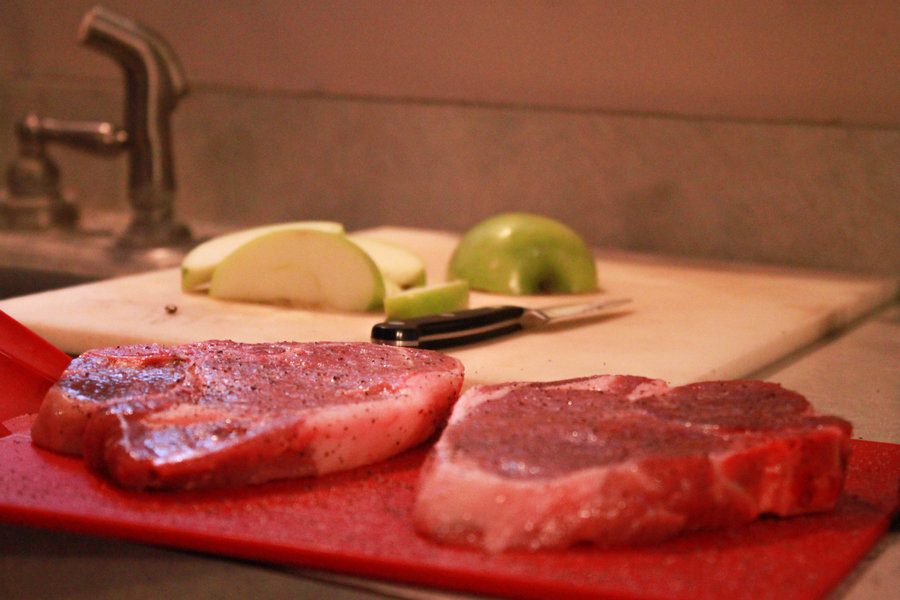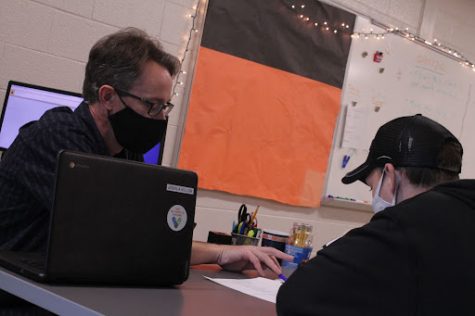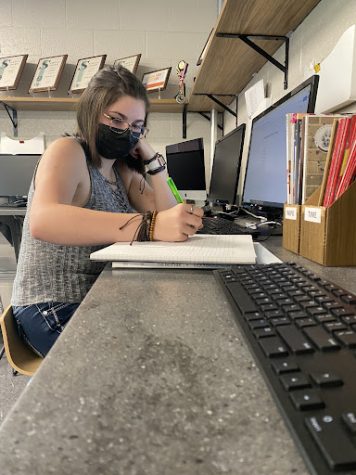The art of culinary
Finding a passion in the kitchen
Anna Baird and Zabrina Yannella
Junior Fravier Arce lays out chops to be seasoned. Next, he pan sears pork chops with brown sugar and green apples for a sweet and sour glaze. To complete the meal he cooks macaroni and cheese.
The artform
With the metallic noise of whisks against bowls and the delicate placement of frosting, senior Lauren Hay works toward her dreams of opening a bakery. Because of a sweet tooth and an enthusiasm for baking, Hay joined the Capital Area Career Center’s (CACC) Culinary Arts and Hospitality program in her junior year.
“It’s pretty innovative,” Hay said. “It keeps up with all the trends happening. The class lets you be creative and do what you want. The chefs teach you things, but they let you go off on your own.”
According to the CACC’s website, the class teaches several different skills in the kitchen, such as menu planning; preparing and cooking of foods; aesthetics of food presentation and familiarity; and a mastery of a wide variety of cuisines to name a few.
“The art form happens in several aspects of the culinary arts program,” CACC chef Corbett Day said. “First, it is in the understanding of the products that you are using. Next, is how you utilize those products in the development, and the final would be how you present those ingredients in the final presentation.”
In order to succeed in the culinary program, students must have strong academics, must be customer service minded and must have desire a to work hard.
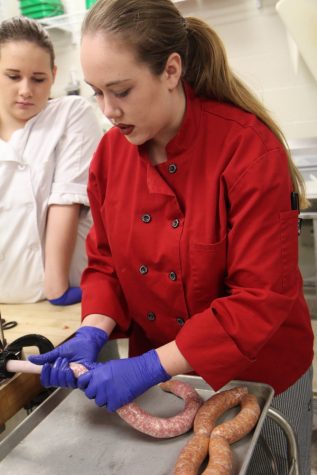
The career
Junior Fravier Arce participates in this program in the morning session, joining this past September.
“The main thing I like about the culinary program at career center would have to the connections that you make with certain people there,” Arce said. “Also, my teacher, Corey, who goes out of his way to make sure that we are successful.”
Four local artists attend the program, learning the basics of kitchen mastery, along with any specialization in their own personal interests. The aspiring chefs have a chance to connect with other teens with the same desires as them, to learn interests and make connections.
The classroom setting for the program is a bit different than a normal classroom. Instead of a generic desk and chair setting, the students learn in a kitchen, where all their utensils can be used and they have the space to work. The culinary arts students have access to different equipment, such as stoves, grills and ovens. This access opens up a number of different opportunities for students wanting to have a career in a certain fields of food science.
According to the Culinary Arts career facts by Lansing Community College, a career in the culinary arts program makes anywhere from $16,000 to $100,000 a year, depending on the geographical location of the career.
The employment in food preparation is projected to increase by 7 percent from 2014 to 2024, from about 12.5 million jobs to about 13.3 million jobs, reports the United States Department of Labor.
The proof of artwork in the culinary program is in the pudding. Direction and instruction is followed thoroughly, ingredients are prepared and meals are plated meticulously.
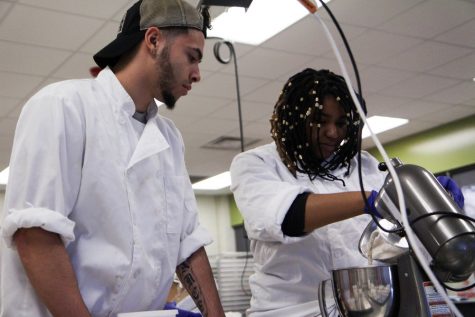
The future
Often, students enter the program wondering if they even have an interest in the program, and spend a year deciding if it is for them. They can come back for a second year of college if they so choose.
Senior Katey Nolan has been in culinary since the fall of 2016, and even though she claims to love cooking, she does not want to work in the food industry.
“I’ve taken away from this with how to work together with a family,” Nolan said. “I loved how it wasn’t an actual classroom setting, it was in a kitchen and we would be cooking. The chefs explained the competition. I thought, I need to figure out if culinary is a career I would want to have. Why not start that in high school?”
The competition is a series of different exams of skills that the culinary program teaches according to Chef Corbett. Competitors must attain good scores on multiple parts of the competition: restaurant service, commercial baking, team banquet, culinary arts, hospitality management, menu design, sanitation and safety, food innovations, sports nutrition, applied math in the culinary arts and nutrition.
“I get to meet new people and experiment with new food,” junior Brittany Freiermuth said. “I wanted to get out of the high school and do something fun. I’ve always liked cooking, and I wanted to try it myself. I plan on going to a culinary institute or college like CIA. That’s the Culinary Institute of America in New York.”
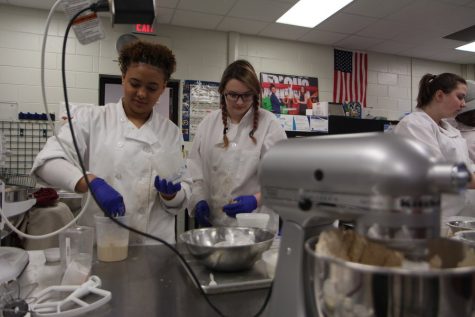

I received an invitation to join the newspaper in my ninth grade year around scheduling time. This opportunity led to an experience I never even thought...



